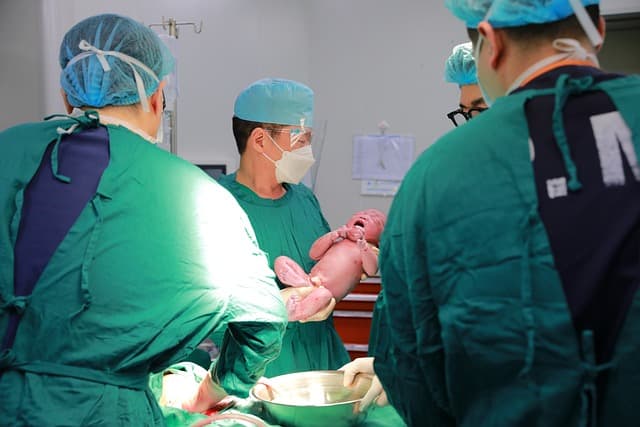Diastasis is a side-to-side separation of the rectus abdominis muscles. In this case, the white line of the abdomen – a connective tissue structure that connects the muscles that form the most desirable “abs” – thins and stretches. If its width is more than 20 mm – we are talking about the presence of diastasis of the rectus muscles.
Diastasis itself is not a disease, but rather a physiological condition. It is not a hernia: there is no defect in the white line, respectively, there is no risk of impingement of internal organs. At the same time, the expansion and thinning of the white line increases the potential risk of developing true hernias.
Causes of diastasis
Most often diastasis appears in the third trimester of pregnancy. This is one of the manifestations of physiological changes in the connective tissue of women during this period under the influence of hormones – the anterior abdominal wall is stretched due to connective tissue structures (and above all the white line) – otherwise the uterus with a growing baby would simply not fit in the abdominal cavity. In this case, the center of gravity of the body is shifted to the front, increases the curvature of the spine, increases the pressure on the anterior abdominal wall The second reason for the appearance and increase in diastasis – increased pressure in the abdominal cavity, including during some physical exercises.
In the postpartum period, the distance between the muscles decreases, but this process takes about a year. A survey of 300 women conducted by our Norwegian colleagues showed that 6 weeks after childbirth, diastasis persists in 60% of women, and 12 months later in only 33%. This is why we do not recommend considering surgical treatment of diastasis earlier than one year after delivery.
Symptoms of diastasis
Diastasis is often visible to the naked eye. To identify it more clearly, we ask the patient to lift her head and shoulders in the supine position. In this case, the rectus abdominis muscles contract and the bulge or vice versa, a depression along the line running from the sternum to the pubis becomes visible. Palpation allows you to more accurately identify the presence and degree of diastasis.
Diastasis can manifest itself with clinical symptoms. The loss of a strong “fulcrum” for the muscles of the anterior abdominal wall leads to a redistribution of static load, which in turn can lead to pelvic and lumbar pain, and in some, fortunately rare, cases – and violation of the function of the pelvic organs.



